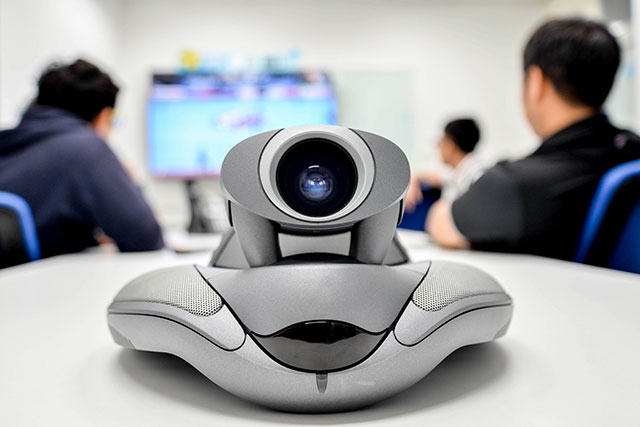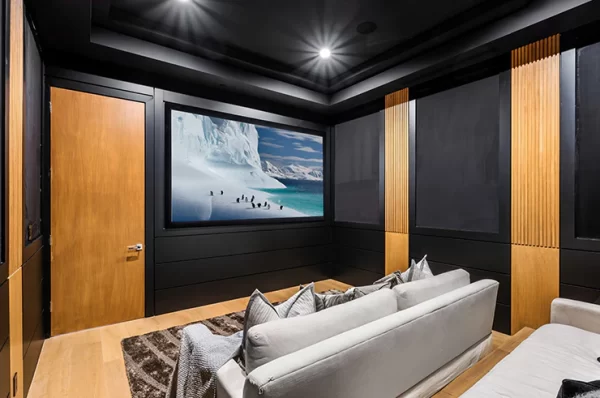April 11, 2025

Effective communication and engaging experiences are paramount. Whether it’s a crystal-clear sound system for your conference room, a captivating video wall in your lobby, or reliable AV for your training facilities, audio and video technology plays a crucial role. But how do you ensure you make the right investments without breaking the bank? Smart budgeting is the key.
At Audio-Video Group, we understand that navigating the world of commercial AV can feel complex. That’s why we’ve put together this guide to help your organization develop a sound budget for your audio and video needs, ensuring you get the most value and impact for your investment.
1. Define Your Needs and Goals: The Foundation of Your Budget
Before even thinking about specific equipment or costs, the first and most critical step is to clearly define your organization’s needs and goals. Ask yourselves:
- What are we trying to achieve with this AV investment? (e.g., improved communication, enhanced customer experience, streamlined presentations, engaging training sessions, increased productivity)
- Who will be using the equipment and in what environments? (e.g., conference rooms, lobbies, classrooms, retail spaces, auditoriums)
- What are the specific functionalities required? (e.g., video conferencing, digital signage, background music, public address system, interactive displays)
- What are the long-term goals for our AV infrastructure? (e.g., scalability, integration with existing systems, future technology upgrades)
Clearly outlining these objectives will help you prioritize your needs and avoid unnecessary expenses.
2. Identify Key Areas of Investment:
Once you have a clear understanding of your needs, you can start breaking down the budget into key areas:
- Equipment: This is often the most significant portion of the budget and includes items like:
- Displays (projectors, TVs, video walls, interactive whiteboards)
- Audio systems (speakers, microphones, amplifiers, mixers)
- Control systems (touch panels, remote controls)
- Cabling and connectivity
- Digital signage players
- Video conferencing cameras and codecs
- Installation: Professional installation is crucial for ensuring optimal performance, safety, and longevity of your equipment. Factor in costs for:
- Labor
- Mounting hardware
- Cabling runs
- System programming and configuration
- Service and Maintenance: Don’t overlook the ongoing costs of keeping your AV systems running smoothly. This includes:
- Preventative maintenance
- Troubleshooting and repairs
- Software updates
- Potential service contracts
- Training: Ensure your team knows how to effectively use the new equipment. Include budget for:
- User training sessions
- Creation of user guides
- Future Upgrades and Scalability: Consider how your needs might evolve in the future. Budgeting for systems that can be easily upgraded or expanded can save you money in the long run.
3. Research and Gather Information:
Now it’s time to do your homework.
- Consult with AV Professionals: Companies like Audio-Video Group have the expertise to assess your needs, recommend solutions, and provide accurate cost estimates. Don’t hesitate to reach out for a consultation early in the process.
- Get Multiple Quotes: Compare proposals from different vendors to ensure you’re getting competitive pricing.
- Research Product Specifications and Reviews: Understand the capabilities and limitations of different equipment options. Look for reputable brands known for quality and reliability.
- Consider Total Cost of Ownership (TCO): Don’t just focus on the initial purchase price. Factor in installation, maintenance, energy consumption, and potential replacement costs over the lifespan of the equipment.
4. Prioritize and Allocate Funds:
With a clear understanding of your needs and potential costs, you can start prioritizing and allocating your budget.
- Identify “Must-Haves” vs. “Nice-to-Haves”: Focus on the essential equipment and functionalities that directly address your core needs.
- Phase Your Investments: If your budget is limited, consider implementing your AV solutions in phases, starting with the most critical areas.
- Explore Financing Options: Some AV providers offer financing or leasing options that can help spread out the cost.
- Build in Contingency: It’s always wise to allocate a small percentage of your budget for unexpected costs or changes in scope.
5. Ongoing Review and Adjustment:
Your AV budget shouldn’t be a static document. Regularly review your needs and the performance of your systems. As your organization evolves, your AV requirements may change, and you’ll need to adjust your budget accordingly.
Investing in your commercial audio and video infrastructure is an investment in your organization’s success. By taking a strategic and thoughtful approach to budgeting, you can ensure you’re making informed decisions that deliver long-term value and help you achieve your business objectives.
Ready to discuss your organization’s AV needs and develop a smart budget? Contact the experts at Audio-Video Group today! We’re here to help you navigate the world of commercial AV and find the perfect solutions for your business.
Audio-Video Group – Your Partner in Commercial Audio & Video Solutions.






